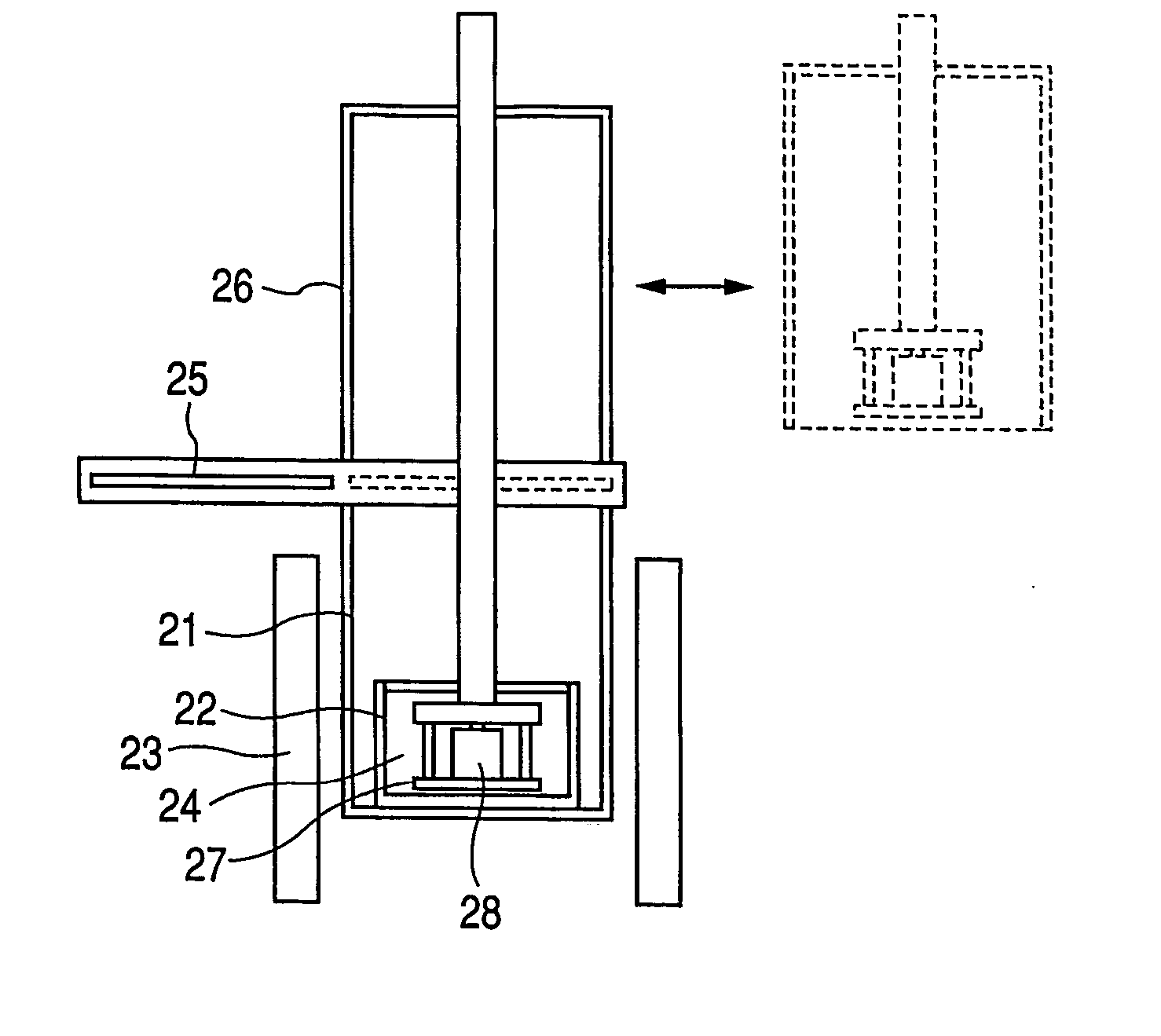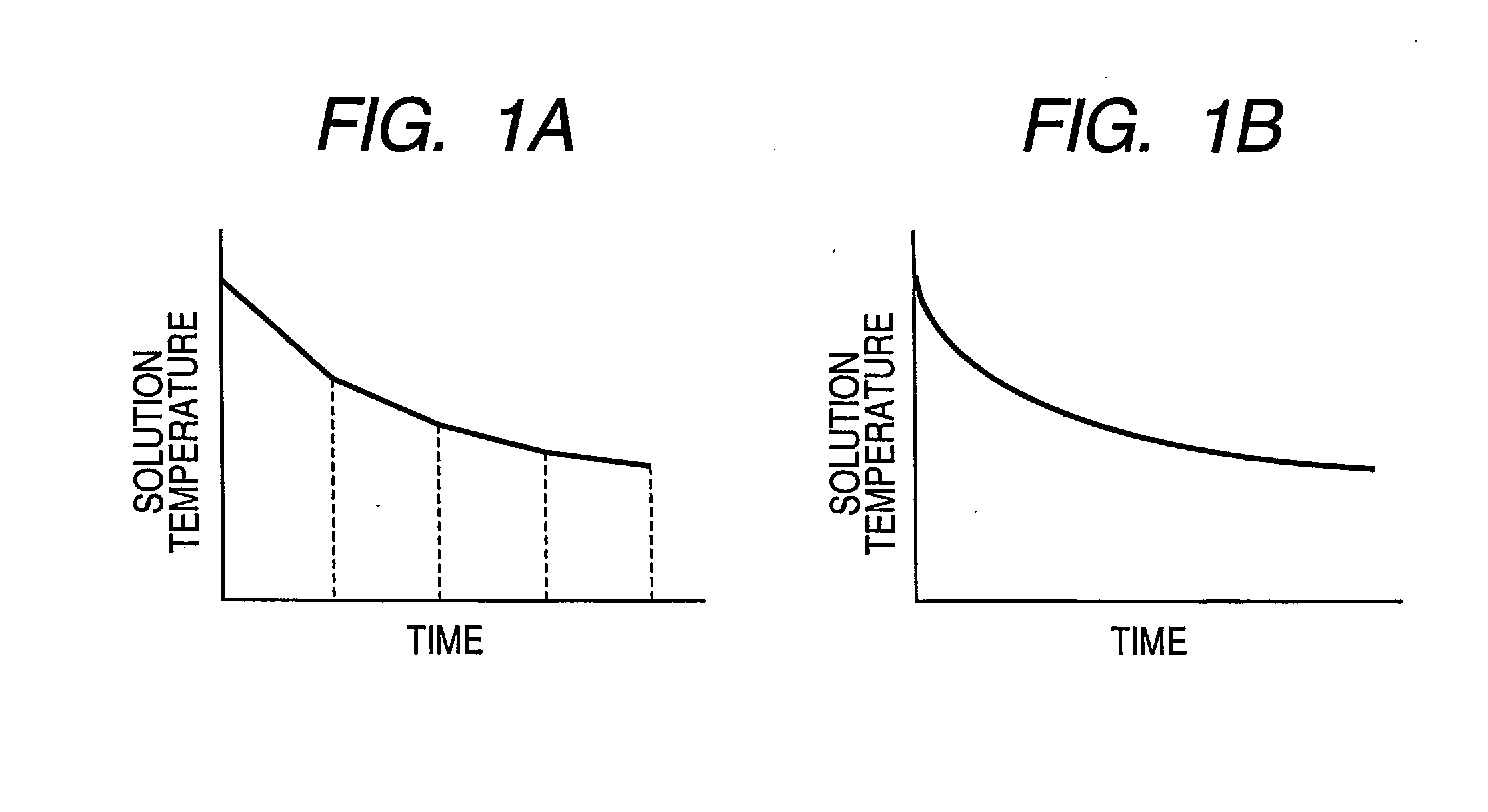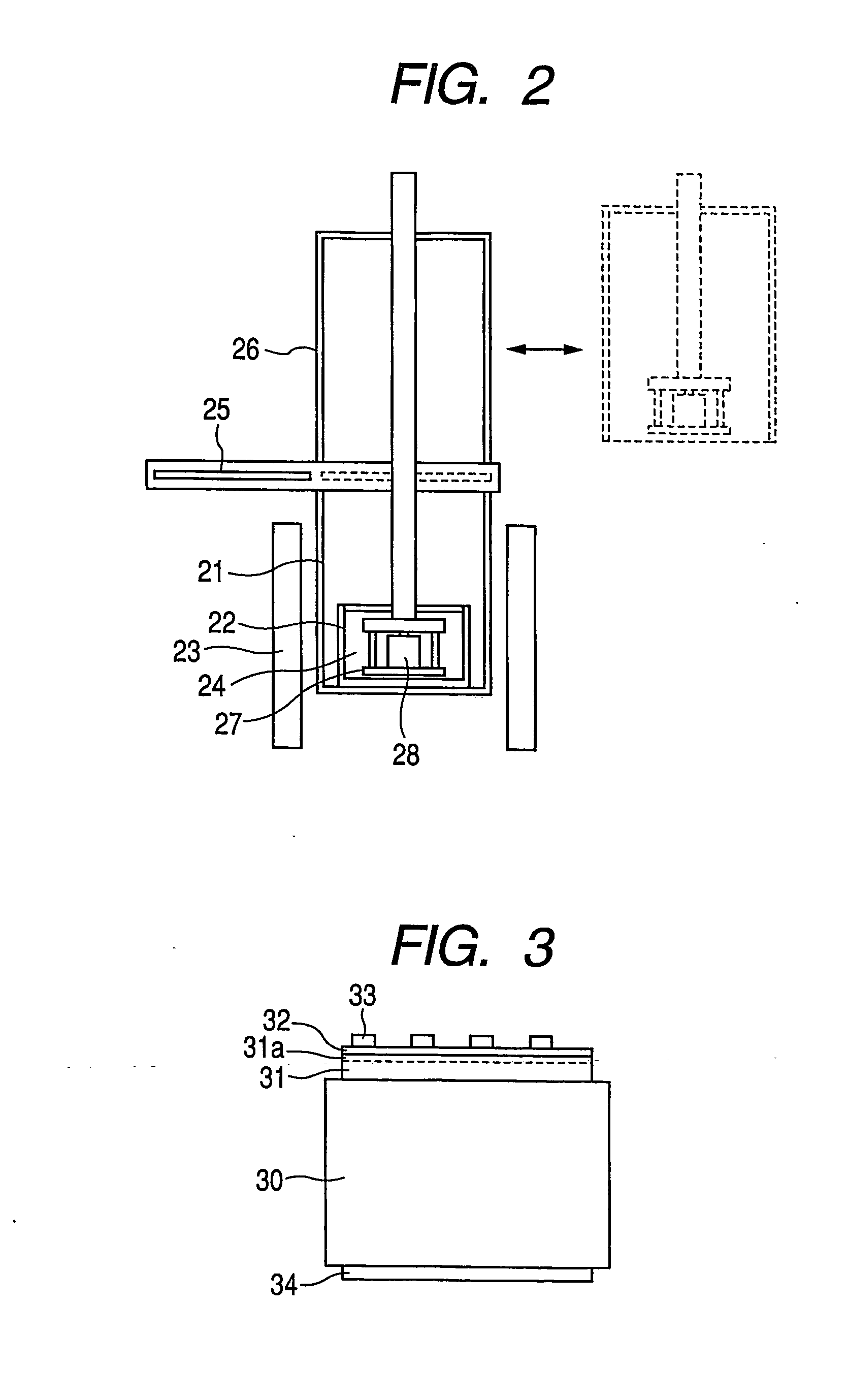Silicon layer production method and solar cell production method
- Summary
- Abstract
- Description
- Claims
- Application Information
AI Technical Summary
Benefits of technology
Problems solved by technology
Method used
Image
Examples
example 1
(Pretreatment of Substrates)
[0025] Substrates used were metallurgical grade multicrystalline silicon substrates each of 47 mm square and 0.6 mm in thickness. The substrates were cleaned with running water for 5 minutes and then dipped in a mixed liquid of sulfuric acid and hydrogen peroxide solution (3:1 in volume ratio) for 10 minutes. Subsequently, the substrates were cleaned with running water for 5 minutes and then dipped in a mixed liquid of nitric acid, acetic acid and hydrofluoric acid (600:136:64 in volume ratio) for 6 minutes and 30 seconds to etch the surfaces of the substrates. The arithmetical mean surface roughness of the substrate surfaces after the etching ranged between 0.18 μm and 0.43 μm. Finally, the substrates were cleaned with running water for 5 minutes and then dried by dry nitrogen blow, thereby completing the substrate pretreatment.
[0026] By using a liquid phase growth apparatus of a structure shown in FIG. 2, a silicon laye...
PUM
| Property | Measurement | Unit |
|---|---|---|
| Surface roughness | aaaaa | aaaaa |
| Temperature | aaaaa | aaaaa |
| Surface roughness | aaaaa | aaaaa |
Abstract
Description
Claims
Application Information
 Login to View More
Login to View More - R&D
- Intellectual Property
- Life Sciences
- Materials
- Tech Scout
- Unparalleled Data Quality
- Higher Quality Content
- 60% Fewer Hallucinations
Browse by: Latest US Patents, China's latest patents, Technical Efficacy Thesaurus, Application Domain, Technology Topic, Popular Technical Reports.
© 2025 PatSnap. All rights reserved.Legal|Privacy policy|Modern Slavery Act Transparency Statement|Sitemap|About US| Contact US: help@patsnap.com



